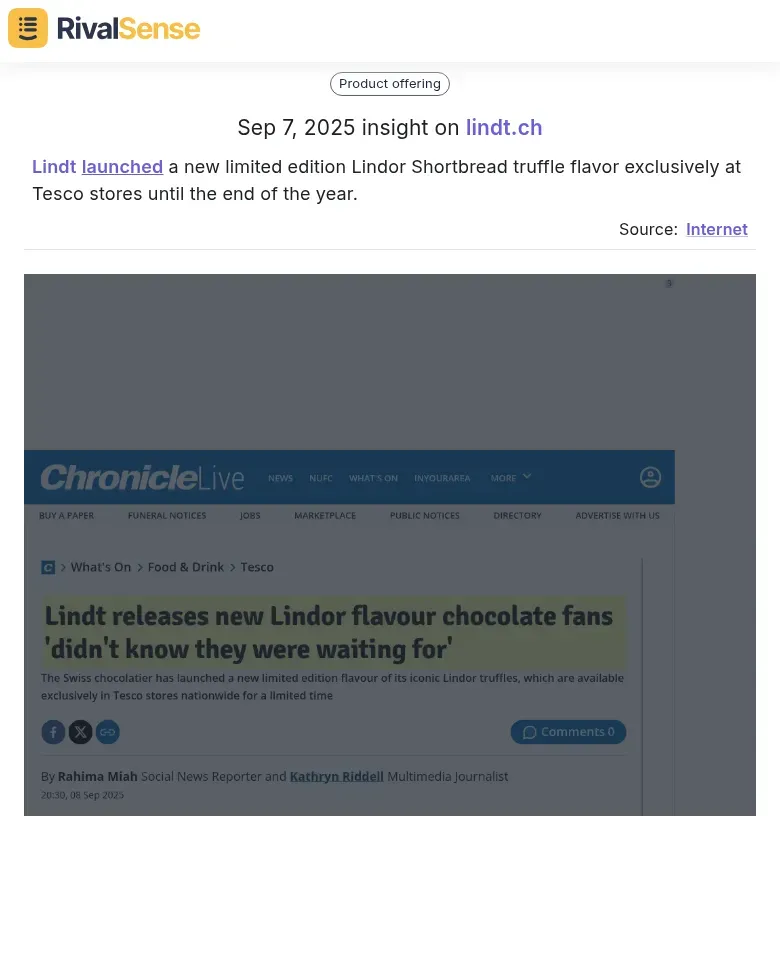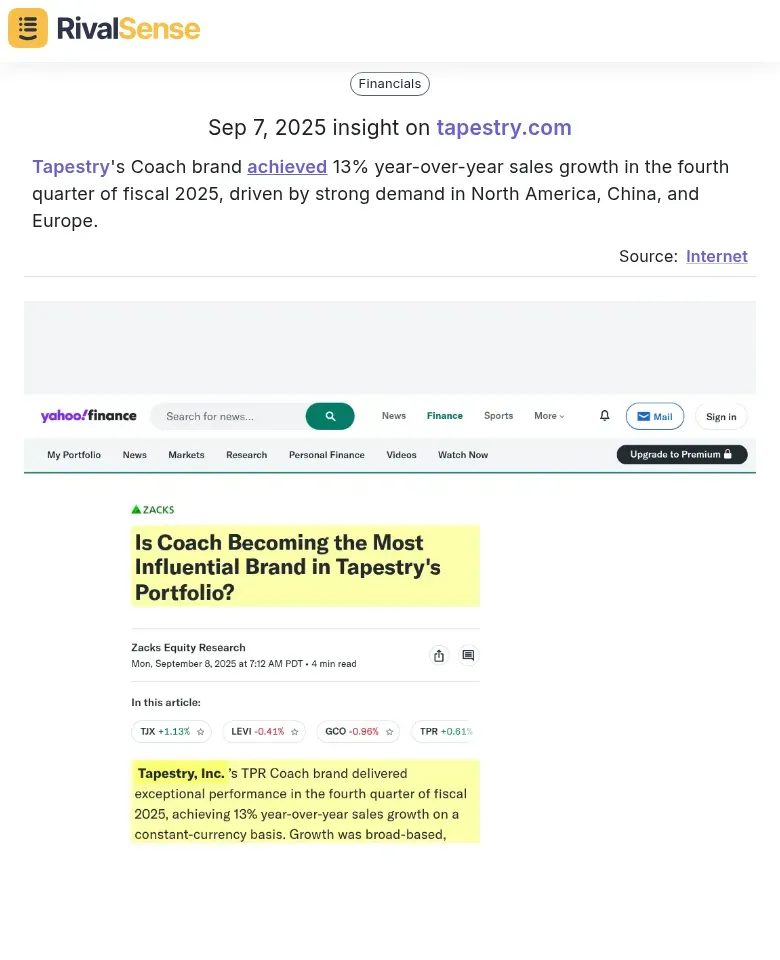Actionable Internet Monitoring Strategies for Competitor Press Releases
In today's hyper-competitive business landscape, tracking competitor press releases in real-time has evolved from a nice-to-have to a strategic necessity. Press releases serve as official windows into your competitors' strategic moves—product launches, executive appointments, funding rounds, and market expansions that reveal critical business intelligence.
Why Real-Time Monitoring Matters:
- Strategic Positioning Insights: Press releases expose how competitors position themselves against market trends and customer pain points
- Early Warning System: New product announcements or market entries signal potential threats to your market share
- Opportunity Identification: Funding announcements or partnership deals reveal growth trajectories and potential collaboration opportunities
Actionable Monitoring Framework:
- Set Up Real-Time Alerts: Use tools like Google Alerts or specialized platforms to track competitor names and industry keywords
- Analyze Messaging Patterns: Document how competitors frame their announcements—what benefits they emphasize and what markets they target
- Connect to Strategy Development: Use insights to refine your positioning, accelerate product roadmaps, or adjust pricing strategies
Practical Tip: Create a competitor press release dashboard that categorizes announcements by type (product, funding, partnership) and tracks frequency to identify strategic patterns over time.
Setting Up Your Monitoring Framework: Tools and Techniques
Building an effective monitoring framework requires strategic tool selection and systematic setup. Start with comprehensive platforms like AlphaSense or Meltwater that cover news sites, PR wires, social media, and financial filings. For specialized press release tracking, tools like Brand24 or ChangeTower offer real-time alerts specifically for corporate announcements.
Key setup steps:
- Create competitor-specific keyword lists including company names, executive names, and product terms
- Set up Boolean search alerts with variations (e.g., "Company X" OR "CX Inc" AND "launch" OR "announce")
- Configure notification thresholds - immediate alerts for major announcements, daily digests for general news
- Integrate with Slack, Teams, or email for automated team notifications
- Establish escalation protocols for urgent competitive moves
Pro tip: Use visual monitoring tools like Visualping to track competitor press release pages directly, ensuring you never miss an update even if traditional alerts fail.
Analyzing Product Launch Strategies from Competitor Releases
Analyzing competitor press releases for product launches reveals strategic patterns you can leverage. First, identify limited edition and exclusive distribution tactics. Look for phrases like "exclusive partnership with [retailer]" or "limited to [number] units" - these indicate scarcity marketing. Create a checklist: note distribution partners, availability windows, and any geographic restrictions.
For example, RivalSense recently tracked Lindt's launch strategy with their new limited edition Lindor Shortbread truffle flavor exclusively at Tesco stores until the end of the year. This type of insight reveals valuable information about retail partnerships and seasonal marketing tactics that can inform your own distribution strategy.

For launch timing, track seasonal patterns. Competitors often align releases with holidays, industry events, or fiscal quarters. Monitor if they avoid crowded periods or capitalize on seasonal demand. Practical tip: maintain a calendar of competitor launch dates to identify optimal timing gaps.
Extract audience segmentation insights by analyzing language and imagery. Note if releases target specific demographics (e.g., "for enterprise leaders" vs. "for creative professionals") or psychographics. Product differentiation clues appear in feature emphasis - if competitors highlight "AI-powered" or "sustainable materials," these are likely key differentiators. Actionable step: create a matrix comparing competitor positioning statements to identify unmet market needs.
Decoding Marketing and Brand Positioning Insights
When analyzing competitor press releases, focus on three key areas to decode marketing and brand positioning insights. First, examine celebrity endorsements and spokesperson strategies. Track which influencers competitors partner with and why—do they target credibility, reach, or niche audiences?
For instance, RivalSense captured WeightWatchers' strategic move launching its first comprehensive menopause programme on September 8 and naming Queen Latifah as its spokeswoman. This type of insight helps you understand how competitors are targeting specific demographic segments and leveraging celebrity influence to build brand credibility.

Second, analyze how competitors address emerging market segments and societal trends. Look for keywords related to sustainability, diversity, or digital transformation in their releases. Are they pivoting to new demographics or responding to cultural shifts? Practical tip: Use social listening tools to track sentiment around these themes and compare against your own strategy.
Third, evaluate messaging consistency across different announcements. Scrutinize boilerplate sections—they often contain the core brand narrative. Note any changes over time; inconsistencies may signal strategic shifts. Steps: compile press releases from the past year, highlight repeated phrases, and score consistency (aim for 80%+). This reveals strengths to emulate or gaps to exploit in your positioning.
Interpreting Financial and Performance Indicators
When analyzing competitor press releases for financial insights, focus on extracting regional performance data by comparing sales growth across different markets. Financial performance indicators in press releases can reveal market strengths, weaknesses, and strategic priorities that directly impact your competitive positioning.
RivalSense recently tracked Tapestry's Coach brand achieving 13% year-over-year sales growth in the fourth quarter of fiscal 2025, driven by strong demand in North America, China, and Europe. This type of insight provides valuable intelligence about regional market performance and growth drivers that can inform your own expansion strategy.

Practical steps:
- Create a benchmarking spreadsheet comparing key metrics (revenue growth, profit margins, customer acquisition costs) against industry standards from sources like Gartner or Forrester
- Look for patterns in quarterly results - consecutive quarters of 15%+ growth in a specific region may indicate successful market expansion strategies
- Identify growth drivers by analyzing what competitors credit for success (new product launches, geographic expansion, pricing strategies)
- Use specialized tools to track these metrics over time and set alerts for significant deviations from industry benchmarks
Tip: Pay special attention to how competitors discuss "headwinds" and "tailwinds" - these often reveal market conditions affecting performance across regions.
Turning Insights into Actionable Competitive Strategies
Turning competitor press release insights into actionable strategies requires a systematic approach. First, identify gaps in competitor messaging—when they announce new features but omit key benefits, this reveals opportunities to position your solution as more comprehensive. For example, if a rival launches AI capabilities but lacks integration details, develop counter-messaging emphasizing your seamless API connectivity.
Create a response framework: within 24 hours of competitor announcements, analyze their positioning and prepare tailored counter-narratives. Use a SWOT template to document their strengths (to avoid direct confrontation), weaknesses (to highlight your advantages), opportunities (market gaps they missed), and threats (their potential impact on your accounts).
Implement continuous improvement cycles by scheduling monthly reviews of all competitor press releases. Track patterns in their announcements—recurring themes like sustainability or AI indicate strategic priorities. Adjust your market positioning accordingly, ensuring your messaging addresses emerging trends before competitors can dominate the narrative.
Practical checklist:
- ✅ Set up real-time alerts for competitor press releases
- ✅ Maintain a response playbook with pre-approved counter-messaging templates
- ✅ Conduct quarterly gap analysis to identify unmet customer needs
- ✅ Train sales teams on competitive positioning within 48 hours of major announcements
- ✅ Measure impact through win/loss analysis tied to specific competitor moves
Ready to Transform Your Competitive Intelligence?
Implementing these strategies requires the right tools and consistent execution. RivalSense tracks competitor product launches/updates, pricing changes, event participations, partnerships, regulatory aspects, management changes, and media mentions across company websites, social media, and various registries—delivering comprehensive insights in a weekly email report.
Try RivalSense for free today and get your first competitor report to start turning competitive intelligence into actionable business strategies: https://rivalsense.co/
📚 Read more
👉 Toy Industry CRM Benchmarking: How to Track Key Accounts and Outperform Competitors
👉 Advanced Tactics: Uncover Competitor Product Secrets via Backlink Analysis
👉 Why Tracking Competitor Executive Hires Matters: The Gigi Janelidze Case
👉 How to Do Competitor Target Audience Analysis: A Practical B2B Guide
👉 Risk Management in Key Account Strategy: A Practical Guide
